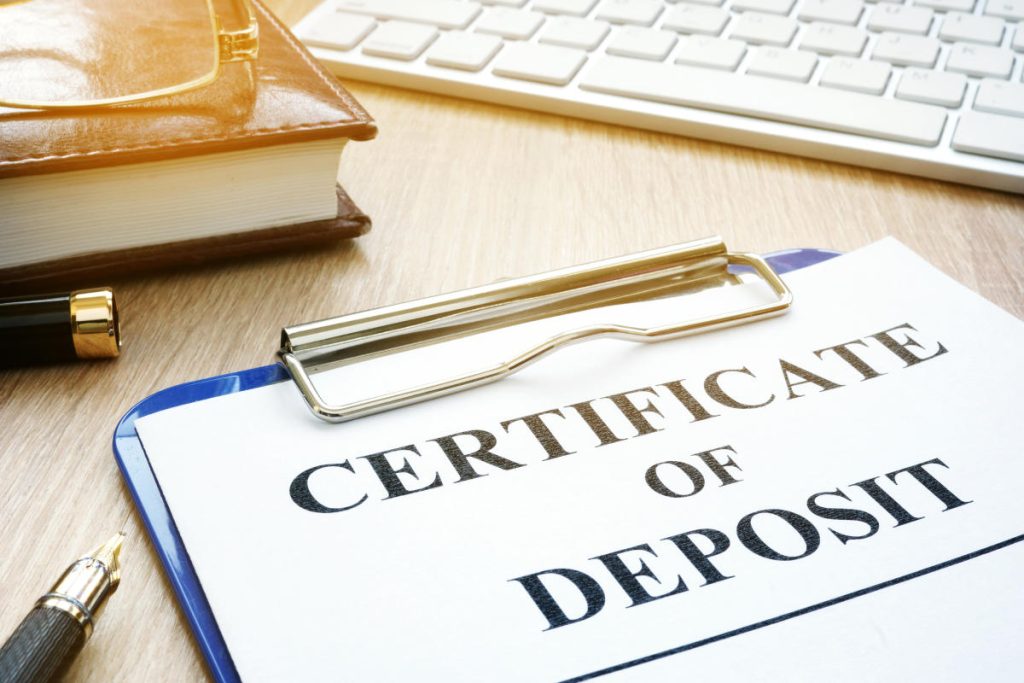
Interest rates on certificates of deposit (CDs) have fallen, and there’s a chance they could fall even further this year.
Since September of 2024, when the Federal Reserve began its most recent flood of federal funds rate cuts, the interest rates on CDs have been dropping. Today, the average account now pays below 2%.
If you’re looking to earn the highest rate possible on your savings, the outlook may be discouraging. But it doesn’t mean CDs are a bad bet. In fact, you can still find accounts that pay as high as 4.50% APY. Plus, you have time to invest before anticipated future rate changes take effect.
Even though CD rates have dropped, CDs are still a good place to invest some of your money.
In particular, CDs are an excellent choice for holding money you’re saving up for a specific future goal. Think: a down payment on a home or funds for your summer wedding.
By putting your money in a CD, you can lock in a competitive fixed rate for a set period of time (typically six months to five years). Then, you’ll get penalty-free access to your money when you need it at a later date.
How much more will you earn with a CD versus a savings account? It depends on the account, but on average, CDs currently offer about one percentage point more than traditional savings accounts. Even better, the interest rates on CDs are fixed, meaning they won’t change at any point during the term. The same, however, isn’t true for savings accounts, which have variable interest rates.
In other words, if you find a high-yield savings account (HYSA) that pays 4.50% APY and a CD with the same rate, the CD may be a better option. However, you need to be sure you won’t have to tap those funds until the account reaches maturity. Otherwise, you’ll be subject to an early withdrawal penalty, which will wipe out some or all of your interest earnings.
Read more: The best CD rates on the market today
Want to ensure you earn the most competitive returns on your CD? You’ll need to do a little research and preparation up front. Here are a few ways to get the best outcome.
A CD is not the right place for your emergency savings since you’ll face penalties if you need to withdraw the money before the maturity date. So, instead of putting all your savings into a CD, make sure you set aside some cash in a fully liquid emergency fund.
Read more: The 4 best (and worst) places to keep your emergency fund
There’s a ton of variation in the CD rates offered by different financial institutions. While the average CD currently yields 0.23% to 1.82% (depending on the term), you can find rates above 4% if you shop around. For the best CD rates, you might have to go with a bank you’ve never used before.
Read more: This map shows the highest CD rates in every state
When the Federal Reserve adjusts the federal funds rate, CD rates move in tandem. By staying informed about the Fed’s plans for upcoming rate changes, you can anticipate whether CD rates are likely to change in the near future. As a result, you can choose the optimal term for your CD.
Here’s how you should respond to each of the following forecasts from the Fed:
-
Rate increases: Shop for a CD with a short term or consider setting up a CD ladder, which allows you the freedom to move money to a higher-yield CD after the Fed makes an increase.
-
Rate cuts: Prioritize long-term CDs that give you competitive, locked-in rates beyond the date of the anticipated rate decrease.
-
No change: Compare interest rates and terms to decide which CD best helps you earn solid returns before you need the money back.
Will the Fed make any rate adjustments in 2025? Their projection for this year has shifted from four rate cuts down to two, but tariffs and other economic policies could increase inflation, which means rate hikes are not off the board.
Read more: Should you open a savings account or CD before the Fed’s next meeting?
With CDs, there’s a trade-off: In exchange for agreeing to leave your money on deposit for a set period, you can earn higher deposit rates than you get from a savings account. If you withdraw the money early, however, you’ll face a penalty.
Early withdrawal penalties usually involve forfeiting several months’ worth of interest, giving up a set percentage of your interest, or paying a flat fee. You may also lose some of your principal deposit, depending on the account. So it’s important to choose a CD term that aligns with your savings timeline.
Read more: What is a CD early withdrawal penalty?



